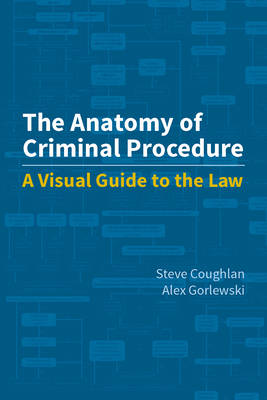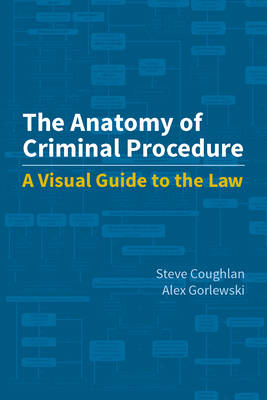
- Afhalen na 1 uur in een winkel met voorraad
- Gratis thuislevering in België vanaf € 30
- Ruim aanbod met 7 miljoen producten
- Afhalen na 1 uur in een winkel met voorraad
- Gratis thuislevering in België vanaf € 30
- Ruim aanbod met 7 miljoen producten
Zoeken
The Anatomy of Criminal Procedure
A Visual Guide to the Law
Steve Coughlan, Alex Gorlewski
Paperback | Engels
€ 88,45
+ 176 punten
Omschrijving
Criminal law is a powerful legal tool in Canadian society consisting of numerous procedural rules but little organization. Provisions of the Criminal Code that are directly relevant to each other are often separated by many different (and usually irrelevant) sections and subsections. The common law rules of criminal procedure, meanwhile, are often established incrementally, in numerous cases decided over a long period of time. With both the Code and common law, it can be difficult and time-consuming to assemble and explain the entire legal framework governing a particular police power or court procedure. This deficiency in the law is what led authors Steve Coughlan and Alex Gorlewski to create a comprehensible resource that clarifies the relationships among the individual statutory provisions and the common law rules of criminal procedure.
The Anatomy of Criminal Procedure: A Visual Guide to the Law illustrates the law of criminal procedure through nearly seventy annotated charts and diagrams. Across the whole criminal process -- from search and seizure to appeals and sentencing -- this book consolidates the statutory and common law rules around each step, visually depicts how they fit together, and explains in detailed annotations how the rules work and have been interpreted by courts. This is a valuable text for practitioners who work with the criminal process every day, as well as for students learning it for the first time. Coughlan and Gorlewski aim to outline the law as it was created and implemented by our institutions, while providing the coherence it sometimes lacks yet certainly requires.
The Anatomy of Criminal Procedure: A Visual Guide to the Law illustrates the law of criminal procedure through nearly seventy annotated charts and diagrams. Across the whole criminal process -- from search and seizure to appeals and sentencing -- this book consolidates the statutory and common law rules around each step, visually depicts how they fit together, and explains in detailed annotations how the rules work and have been interpreted by courts. This is a valuable text for practitioners who work with the criminal process every day, as well as for students learning it for the first time. Coughlan and Gorlewski aim to outline the law as it was created and implemented by our institutions, while providing the coherence it sometimes lacks yet certainly requires.
Specificaties
Betrokkenen
- Auteur(s):
- Uitgeverij:
Inhoud
- Aantal bladzijden:
- 434
- Taal:
- Engels
Eigenschappen
- Productcode (EAN):
- 9781552215050
- Verschijningsdatum:
- 10/07/2019
- Uitvoering:
- Paperback
- Formaat:
- Trade paperback (VS)
- Afmetingen:
- 152 mm x 226 mm
- Gewicht:
- 793 g

Alleen bij Standaard Boekhandel
+ 176 punten op je klantenkaart van Standaard Boekhandel
Beoordelingen
We publiceren alleen reviews die voldoen aan de voorwaarden voor reviews. Bekijk onze voorwaarden voor reviews.











